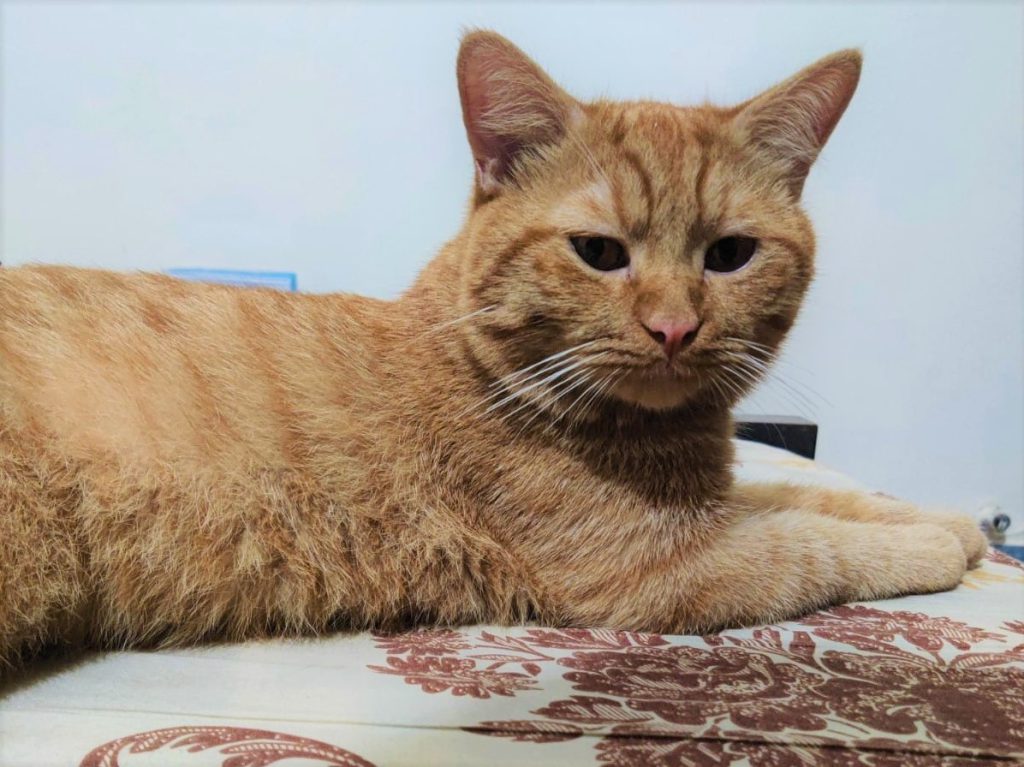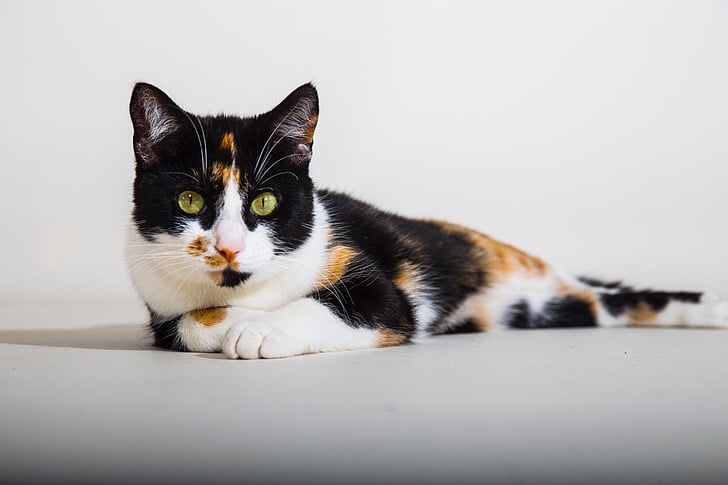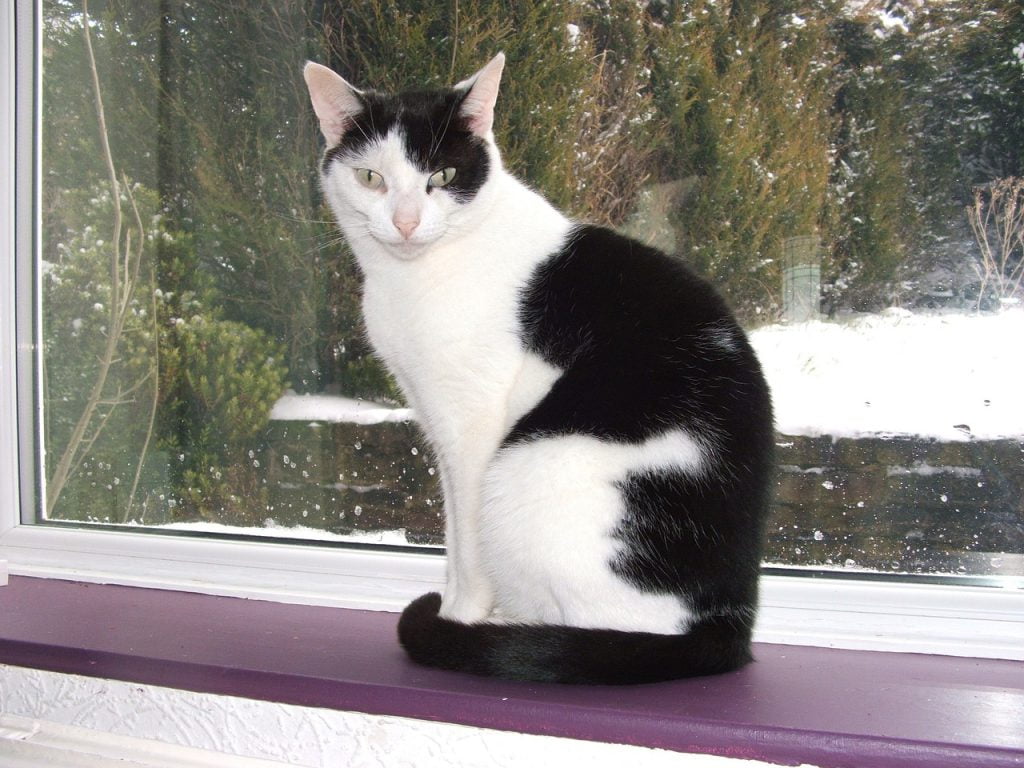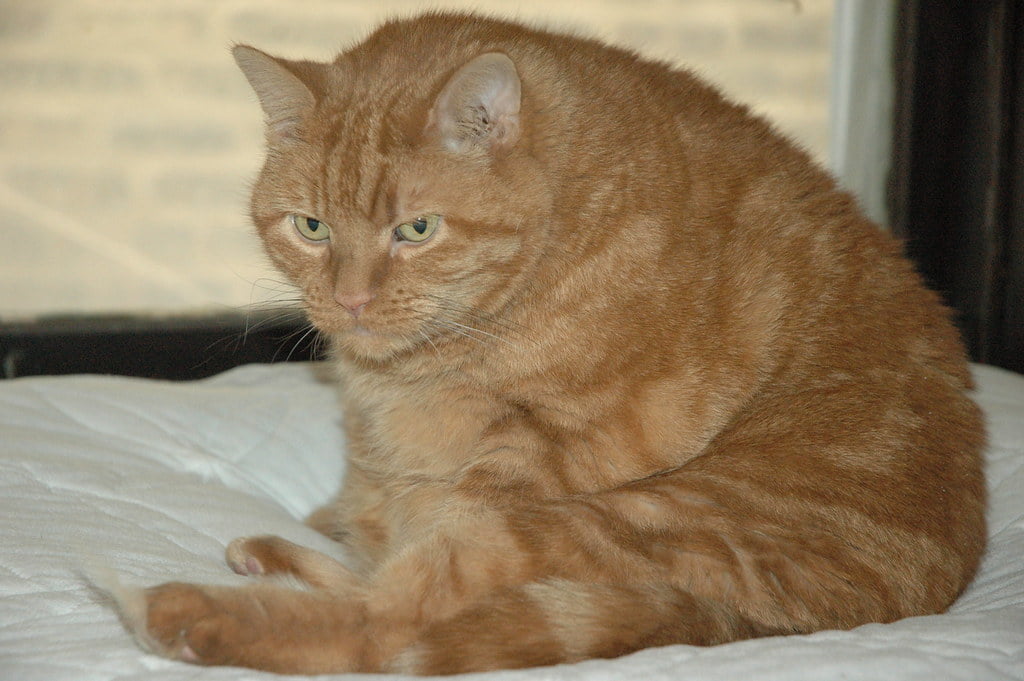If you are a cat lover or cat owner and you are wondering what to know about male cats then this blog is for you. I have explained the unique behaviors, habits, territorial tendencies to roaming, health concerns, and nutritional diet of male cats. So let’s uncover it.
Why Male Cats Deserve Our Attention
Male cats are often misunderstood and stereotyped as aggressive, territorial, or aloof. However, male cats have many qualities that make them wonderful companions and fascinating creatures.
They are intelligent, playful, loyal, and affectionate. They can also form strong bonds with their owners and other animals. Male cats deserve our attention because they have unique personalities and behaviors that enrich our lives and challenge our assumptions.
Read Also: Top Interesting Cat Facts : A Must-Read for Cat Lovers
The Mysterious World of Male Cats
Male cats have a mysterious world that is not always visible to humans. They have complex social structures, communication systems, and mating rituals. They also have remarkable abilities and adaptations that help them survive and thrive in different environments.
For example, The rare known fact about male cats is that they can sense the Earth’s magnetic field, which helps them navigate and find their way home. They can also produce different types of vocalizations, such as purring, meowing, hissing, and chirping, to express their emotions and intentions. Male cats are constantly exploring and learning about their surroundings and themselves.
Physical Characteristics of Male Cats
Male cats have some physical characteristics that distinguish them from female cats. Male cats are usually larger and heavier than female cats, with broader heads, chests, and shoulders. Male cats also have more muscle mass and strength than female cats, which gives them an advantage in fighting and hunting.
Male cats have longer and thicker fur than female cats, especially around the neck and tail. This is called the “ruff or mane“, which helps protect them from injuries and cold weather. Male cats also have longer whiskers than female cats, which help them sense their environment and balance.
| Characteristic | Male Cats | Female Cats |
|---|---|---|
| Size | Larger and heavier | Smaller and lighter |
| Weight | 9-12 pounds | 7-10 pounds |
| Length | 18-20 inches | 16-18 inches |
| Head | Larger and wider | Smaller and narrower |
| Paws | Larger | Smaller |
| Tail | Thicker | Thinner |
Breeds and Variations



Male Cat Breeds: From Maine Coon to Siamese
There are many different breeds of male cats that have distinctive features and traits. Some of the most popular breeds of male cats are:
Maine Coon: This is one of the largest breeds of domestic cats, with an average weight of 15 to 25 pounds. Maine Coons have long and thick fur that comes in various colors and patterns. They have large ears with tufts of hair at the tips, called lynx tips. They also have long tails that are bushy and plumed. Maine Coons are friendly, gentle, and loyal.
Siamese: This is one of the oldest breeds of domestic cats, originating from Thailand (formerly known as Siam). Siamese have short and sleek fur that is white or cream with dark points on the ears, face, legs, and tail. They have blue eyes that are almond-shaped and slanted. They also have long bodies that are slender and muscular. Siamese are vocal, curious, and affectionate.
Persian: This is one of the most popular breeds of domestic cats, originating from Iran (formerly known as Persia). Persian cats have long and fluffy fur that comes in various colors and patterns. They have round heads with flat faces and large eyes that are round and expressive. They also have short legs that are sturdy and stocky. Persian cats are calm, sweet, and elegant.
Also Read: Persian Cat Behavior Problems
Unique Coat Patterns and Colors
Male cats can have unique coat patterns and colors that make them stand out from other cats. Some of the most common coat patterns and colors are:
Tabby: This is the most common coat pattern among domestic cats, characterized by stripes, spots, or swirls on a background color that can be brown, gray, orange, or black. Tabby cats also have an M-shaped mark on their forehead, which is called the tabby mark. Tabby cats are playful, energetic, and intelligent.
Tortoiseshell: This is a coat color that consists of patches of black, orange, and white. Tortoiseshell cats are almost exclusively female, but occasionally a male tortoiseshell cat can be born due to a genetic mutation. Tortoiseshell cats are also called torties, and they are known for their strong personalities and independence.
Tuxedo: This is a coat color that consists of black and white, resembling a formal suit. Tuxedo cats have a black coat with white markings on the chest, belly, paws, and face. Tuxedo cats are also called tuxies, and they are known for their sociability and charm.



Behavior and Temperament
The typical personality traits and behavioral patterns of male cats, as well as how they differ from female cats are:
Independent Nature of Male Cats
Male cats are generally more independent than female cats, meaning they tend to be less attached to their owners and more self-reliant. Male cats may also be more adventurous and curious, exploring new places and situations.
Male cats are often less needy and demanding of attention, but they can also be more affectionate and playful when they are in the mood. Male cats may also exhibit more territorial behavior, such as spraying urine or fighting with other cats, especially if they are not neutered.
Male Cats vs. Female Cats: Behavioral Differences
There are some general differences between male and female cats in terms of behavior and temperament. Still, these can vary depending on the individual cat, its breed, its environment, and its history. The Behavioral differences between male and female cats are:
| Characteristic | Male Cats | Female Cats |
|---|---|---|
| Affection | More likely to be affectionate and cuddly | More independent and less likely to show affection |
| Playfulness | More playful and energetic | Less playful and energetic |
| Socialization | More social and outgoing | More reserved and shy |
| Spraying | Yes, to mark their territory | No |
| Aggression | More likely to be aggressive towards other cats | Less likely to be aggressive towards other cats |
Socialization and Training Tips for Male Kittens
Socialization and training are important for any cat, but especially for male kittens who may grow up to be strong-willed and independent. Socialization is the process of exposing a kitten to different people, animals, places, sounds, smells, and experiences in a positive way so that it becomes comfortable and confident in various situations.
Training is the process of teaching a kitten the rules and expectations of living with humans, such as using the litter box, scratching appropriate objects, playing gently, and obeying commands.
Some tips for socializing and training male kittens are:
- Start socializing and training your male kitten as early as possible, preferably between 2 to 7 weeks of age. This is the critical period when kittens learn the most from their mother, siblings, and environment.
- Introduce your male kitten to people of various ages, genders, ethnicities, and appearances. Let them handle your kitten gently and give it treats or toys as rewards. Avoid exposing your kitten to people who are loud, rough, or scary.
- Introduce your male kitten to other friendly animals of different species, such as dogs, rabbits, or birds. Make sure the animals are vaccinated, healthy, and well-behaved. Supervise the interactions closely and separate them if there is any sign of stress or aggression.
- Introduce your male kitten to different places in your home and outside your home. Let it explore new rooms, furniture, objects, sounds, smells, and textures at its own pace. Provide a safe place for your kitten to retreat if it feels overwhelmed or scared.
Also Read: Interesting Male Cat Facts
Health and Care
The most important aspects of maintaining the health and well-being of your male cat include information on common health issues, neutering benefits, and nutrition and diet recommendations.

Common Health Issues in Male Cats
Male cats can suffer from various health problems that may affect their quality of life and longevity. Some of these issues are related to their reproductive system, such as testicular tumors, prostate problems, and urethral obstruction. Other issues are more general, such as obesity, diabetes, kidney failure, and urinary tract infections.
Testicular tumors
These are the second most common type of cancer in intact male cats. They can affect one or both testicles and cause swelling, pain, and hormonal changes. The treatment of choice is neutering or castration, which removes the source of the tumor and prevents its spread. If the tumor has already metastasized, radiation and/or chemotherapy may also be needed.
Prostate problems
These include benign prostatic hyperplasia (BPH) or enlarged prostate and prostatitis or inflamed prostate gland. Both conditions can cause difficulty urinating, blood in urine, pain, and infection. Neutering can prevent or reverse prostate enlargement by eliminating the influence of testosterone on the gland. Prostatitis may also require antibiotics and anti-inflammatory drugs.
Urethral obstruction
This is a life-threatening emergency that occurs when a male cat cannot pass urine due to a blockage in the urethra. The blockage can be caused by crystals, stones, mucus, or blood clots. The symptoms include straining to urinate, vocalizing, licking the genital area, vomiting, lethargy, and collapse. Urethral obstruction requires immediate veterinary attention to relieve the pressure on the bladder and kidneys and to treat the underlying cause. Neutering can reduce the risk of urethral obstruction by lowering the concentration of minerals in urine.
Obesity
This is a common problem in male cats that can lead to many health complications, such as diabetes, arthritis, heart disease, liver disease, and skin problems. Obesity is caused by overfeeding, lack of exercise, or hormonal changes. The signs include excessive body fat, difficulty grooming, reduced activity, and increased appetite. Obesity can be prevented or managed by feeding your cat a balanced diet that meets his energy needs and by encouraging him to exercise regularly.
Diabetes
This is a condition that affects the ability of the body to regulate blood sugar levels. It can be caused by obesity, genetics, pancreatitis, or other factors. The symptoms include increased thirst, increased urination, weight loss, appetite changes, weakness, and poor coat condition. Diabetes can be diagnosed by measuring blood glucose levels and urine glucose levels. Diabetes can be treated with insulin injections, diet modifications, and oral medications.
Kidney failure
This is a progressive disease that affects the function of the kidneys. It can be caused by aging, infection, toxins, or other factors. The symptoms include increased thirst, increased urination, weight loss, vomiting, diarrhea, bad breath, mouth ulcers, anemia, and high blood pressure. Kidney failure can be diagnosed by measuring blood urea nitrogen (BUN), creatinine, phosphorus, and urine-specific gravity levels. Kidney failure can be treated with fluid therapy, diet modifications, supplements, medications, and dialysis.
Urinary tract infections
These are infections that affect the bladder or urethra. They can be caused by bacteria, viruses, fungi, or parasites. The symptoms include frequent urination, painful urination, blood in urine, inappropriate urination, and fever. Urinary tract infections can be diagnosed by culturing urine samples and testing for white blood cells, red blood cells, and bacteria. Urinary tract infections can be treated with antibiotics, anti-inflammatory drugs, and pain relievers.
Neutering and Its Benefits
Neutering or castration is the surgical removal of the testicles in male cats. It is a safe and effective procedure that has many benefits for both the cat and the owner. Some of the benefits are:
- It prevents unwanted pregnancies and reduces the number of homeless cats.
- It reduces the risk of testicular cancer and prostate problems in male cats.
- It reduces urine marking and roaming behavior in male cats.
- It can reduce aggression and stress in male cats.
- It can help prevent or reverse some health conditions, such as obesity, diabetes, and urinary tract diseases.
- Neutering can reduce the incidence of feline immunodeficiency virus (FIV) and feline leukemia virus (FeLV) infections in male cats, which are transmitted through fighting and mating.
- Neutering can extend the lifespan of male cats by an average of 62%, according to a study that followed 118,016 cats over a 10-year period.
- Neutering can save you money in the long run by avoiding the costs of unwanted litter, veterinary bills for reproductive diseases, and potential fines for violating animal control laws.
Tip: Neutering is recommended for most male cats, especially if they are not used for breeding purposes. The best time to neuter your cat depends on several factors, such as his breed, size, health, and lifestyle.
Nutrition and Diet Recommendations
Cats are obligate carnivores, which means that they need animal-based protein as their main source of nutrition. They also need a balanced diet that provides them with adequate amounts of fat, carbohydrates, vitamins, minerals, amino acids, and water. The type and amount of food you feed your cat depends on his age, activity level, health status, and personal preferences. Some general guidelines are:
- Feed your cat a high-quality, complete, and balanced commercial cat food that meets its nutritional needs.
- Choose a food that is appropriate for your cat’s life stage (kitten, adult, senior) and lifestyle (indoor, outdoor, active, sedentary).
- Prefer wet food over dry food, as it provides more moisture and helps prevent dehydration and urinary problems.
- Avoid feeding your cat human foods that may be toxic or harmful to him, such as chocolate, onion, garlic, grapes, raisins, alcohol, caffeine, bones, etc.
- Provide your cat with fresh, clean water at all times.
- Monitor your cat’s weight and body condition regularly and adjust his food intake accordingly.
- The recommended protein intake for adult male cats is 26% of their daily calories.
Conclusion
Understanding male cats involves recognizing their unique behaviors and habits. Male cats, particularly those that are unneutered, can exhibit territorial behaviors such as urine marking and can be more aggressive. They are known to roam far and wide, especially during mating season. The debate about their friendliness continues, with some suggesting that male cats are more affectionate, while others argue that factors like breed and upbringing play a significant role.
However, it’s important to remember that these are general observations and individual cat behavior can vary widely. Each cat is unique and brings its own charm and personality to the table. So, if you’re considering bringing a male cat into your home, be prepared for a journey filled with discovery and companionship.
Frequently Asked Questions
What is the average lifespan of a male cat?
The average lifespan of a domesticated male cat is about 12 to 15 years. However, this can vary depending on factors such as breed, health, diet, lifestyle, environment, or genetics.
How do I tell if my male cat is in pain or discomfort?
Some signs that indicate that your male cat may be in pain or discomfort include: hiding, vocalizing, limping, licking, biting, or scratching a specific area, changes in appetite, thirst, or litter box habits, aggression, or lethargy. If you notice any of these signs, you should consult your veterinarian as soon as possible.
Are male cats more prone to certain medical conditions?
Male cats are more likely to develop certain health problems than female cats, such as urinary tract infections, bladder stones, kidney disease, or prostate issues. These conditions can be prevented or treated by neutering your male cat, providing him with fresh water and a balanced diet, and monitoring his urine output and quality.
Should I neuter my male cat, and when is the best time?
Neutering your male cat is a surgical procedure that removes his testicles and prevents him from reproducing. It also reduces his risk of developing certain diseases and behavioral problems. The best time to neuter your male cat is between 4 to 6 months of age before he reaches sexual maturity.
What are some tips for introducing a male cat to a new home?
When bringing a male cat to a new home, you should prepare a safe and comfortable space for him, such as a spare room or a large crate. You should provide him with food, water, a litter box, toys, and bedding. You should also let him explore the rest of the house gradually and under your supervision. You should introduce him to other pets or people slowly and carefully, using positive reinforcement and avoiding any conflicts or stress.
Can male cats be trained to perform tricks like dogs?
Male cats can be trained to perform simple tricks like sit, stay, come, high-five, or roll over. You can use treats, toys, clickers, or praise as rewards for their cooperation. You should keep the training sessions short and fun, and avoid any punishment or force.
How do I handle aggressive behavior in my male cat?
Aggressive behavior in male cats can be caused by various factors, such as fear, pain, stress, territoriality, dominance, or hormones. You can prevent or reduce aggression by neutering your male cat, providing him with enough space and resources, socializing him properly with other animals and people, avoiding any triggers or threats, and consulting a behaviorist or veterinarian if needed.
What are some grooming requirements for long-haired male cats?
Long-haired male cats need regular grooming to keep their fur clean and healthy. You should brush their coat at least once a week to remove any mats, tangles, dirt, or loose hair. You should also trim their nails every few weeks to prevent them from scratching themselves or others. You may also need to clean their ears, eyes, teeth, or anal glands occasionally.
Are there any unique challenges in owning a male cat?
Owning a male cat can be rewarding and enjoyable, but it also comes with some challenges that you should be aware of. Some of these challenges include: dealing with spraying or marking behavior, coping with sexual urges or aggression in intact males, finding a suitable mate or breeding partner if you want to have kittens (which is not recommended unless you are a professional breeder), handling unwanted pregnancies or litters if you do not neuter your male cat (which is also not recommended for ethical and health reasons), managing potential health issues that are more common in male cats.
Can male cats coexist peacefully with other pets?
Male cats can get along well with other pets if they are introduced properly and have enough space and resources to share. Some factors that can affect their compatibility include their age (younger cats are more adaptable than older ones), their personality (some cats are more sociable than others), their breed (some breeds are more friendly than others), their gender (male cats tend to be more tolerant of other males than females), their history (cats that have been socialized with other animals since kittenhood are more likely to accept them than those that have not).
What to expect from male cats?
Male felines, particularly those that haven’t been neutered, often exhibit a range of behaviors. They might use urine to mark their territory, and they can show signs of aggression, especially towards other males. During mating season, they are known to wander far from home.
What are male cats’ habits?
Male felines have certain distinctive habits. They are territorial by nature and may use urine to mark their territory. They also have a tendency to wander, often leaving home in search of female mates. Moreover, male cats are known for their instinctual fighting behavior, especially when they are away from home for extended periods.
Are male cats friendlier?
The friendliness of male cats is a topic of debate. Some believe that male cats tend to be more affectionate and cuddly than their female counterparts. However, others argue that a cat’s friendliness is not solely determined by its gender but can be influenced by other factors such as breed and upbringing.


